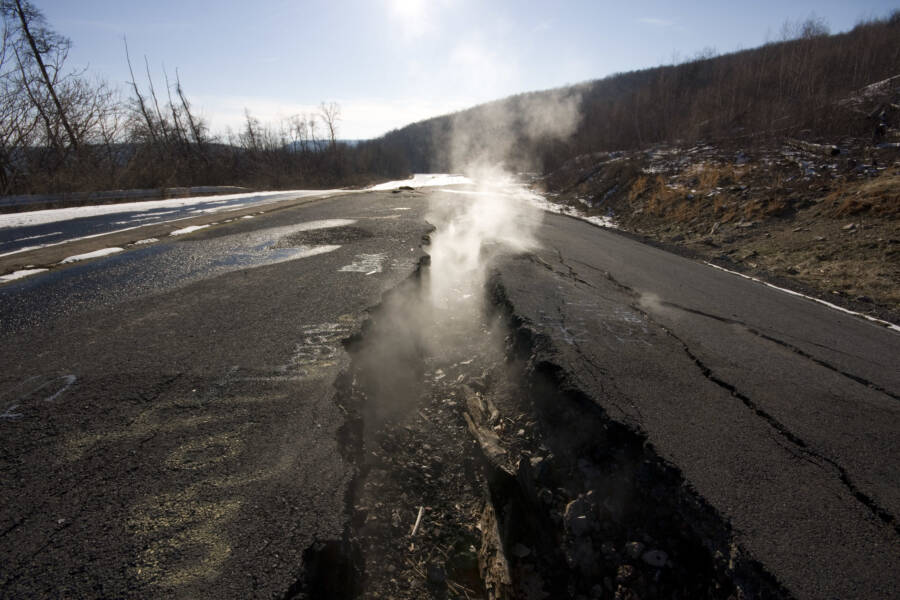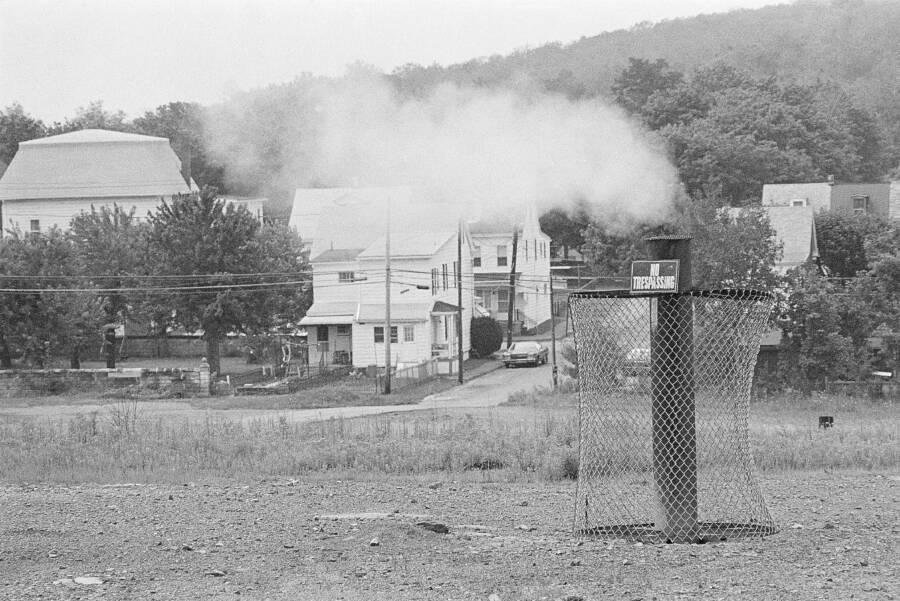Centralia: The Abandoned Town That’s Been On Fire Since 1962

Cole Young/FlickrSmoke billows out of a cracked road in Centralia, Pennsylvania. 2008.
Ghost towns are generally quiet spots. Peaceful, even. But Centralia, Pennsylvania, is a hellish place. It’s been on fire since 1962.
Like many other towns on this list, Centralia grew as a mining town. In the early 20th century, it had 14 active coal mines and more than 2,500 residents. But in 1962, disaster struck when a fire started in a local landfill — and spread to the coal tunnels that snaked beneath the town.
Before long, smoke started pouring out of the ground, and residents complained of a foul odor in the air. Then, things grew even more dire when sensors detected lethal levels of carbon monoxide.

Bettmann/Getty Images
A ventilation shaft installed in Centralia to keep gas from building up beneath the town. 1981.
Centralia’s mines were quickly shut down. But no matter what was tried, no one could stop the fire that was raging beneath the surface.
Despite this, many of Centralia’s residents continued to live in the town. In the 1980s, the population still hovered around 1,000. And some people even leaned into the positives of having a fire constantly burning beneath their feet. For example, they never had to shovel the sidewalks when it snowed because they stayed so warm, and residents were even able to grow tomatoes in the winter.
That said, life in Centralia was hazardous. Sinkholes swallowed entire houses, and residents suffered from the effects of carbon monoxide poisoning. In 1983, the federal government appropriated $42 million to purchase the doomed town, demolish its buildings, and relocate its residents.
A handful of people remain in Centralia today, though the fire beneath the town will likely burn for another 250 years.





